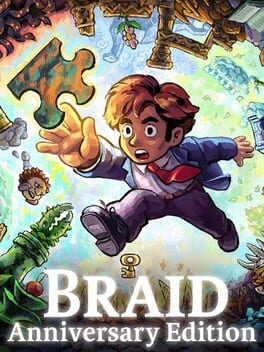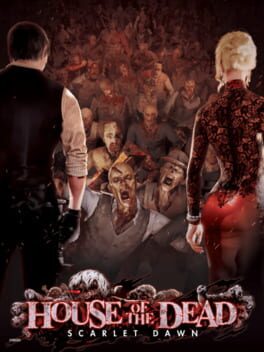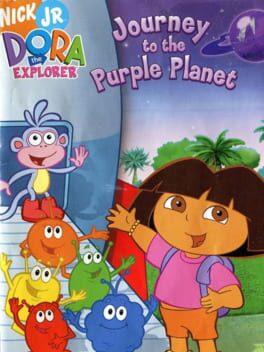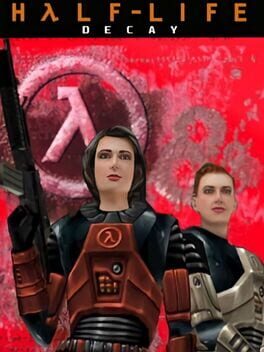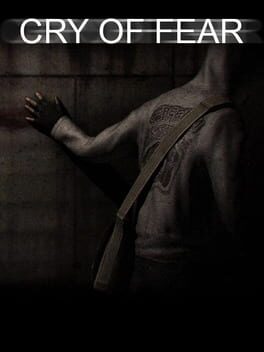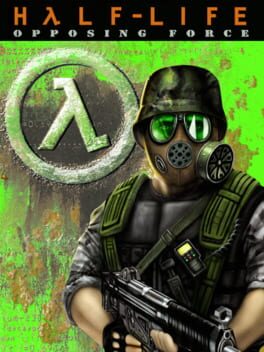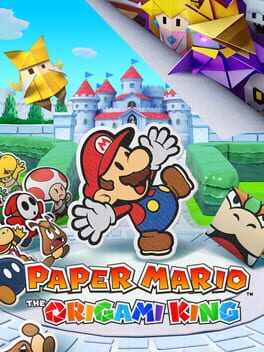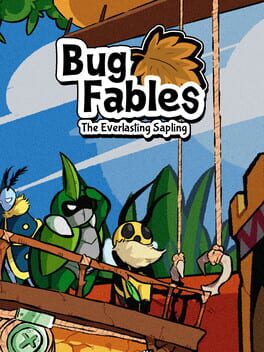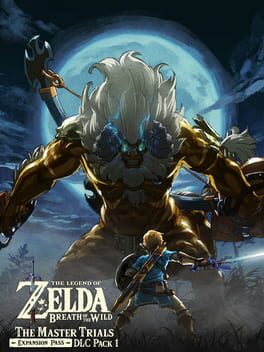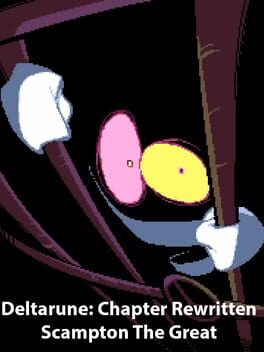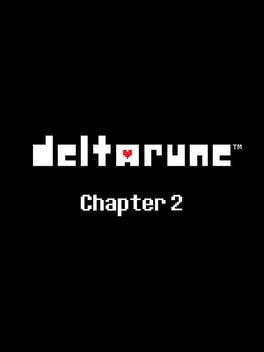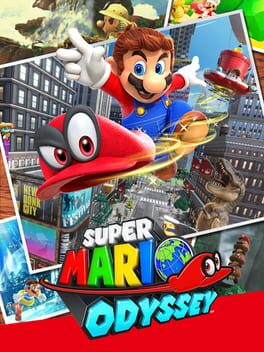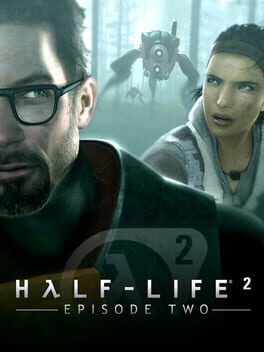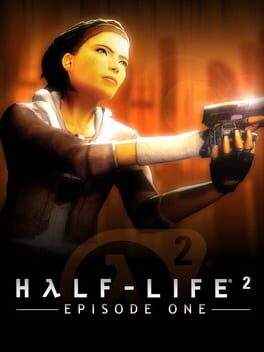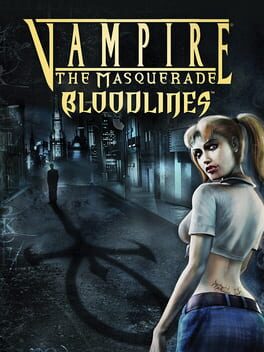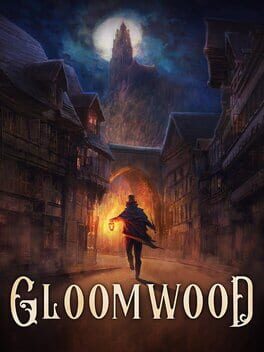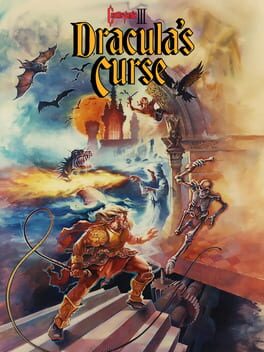81 reviews liked by PipePanic
Half-Life: Decay
2001
Cry of Fear
2013
Alan Wake II
2023
-------------------------------------
𝙾𝙱𝙹𝙴𝙲𝚃 𝙾𝙵 𝙿𝙾𝚆𝙴𝚁
"𝙰𝚕𝚊𝚗 𝚆𝚊𝚔𝚎 𝙸𝙸" (𝙾𝙾𝙿𝟸𝟹-𝙰𝚆)
𝙲𝙾𝙽𝚃𝙰𝙸𝙽𝙼𝙴𝙽𝚃 𝙿𝚁𝙾𝙲𝙴𝙳𝚄𝚁𝙴:
𝙾𝚋𝚓𝚎𝚌𝚝 𝚒𝚜 𝚒𝚗𝚜𝚝𝚊𝚕𝚕𝚎𝚍 𝚘𝚗 𝚊 𝚆𝚒𝚗𝚍𝚘𝚠𝚜 𝟷𝟶/𝟷𝟷 𝟼𝟺-𝚋𝚒𝚝 𝚙𝚎𝚛𝚜𝚘𝚗𝚊𝚕 𝚌𝚘𝚖𝚙𝚞𝚝𝚎𝚛 𝚟𝚒𝚊 𝚊𝚗 𝚘𝚌𝚌𝚞𝚕𝚝 𝚛𝚒𝚝𝚞𝚊𝚕 𝚔𝚗𝚘𝚠𝚗 𝚊𝚜 𝚝𝚑𝚎 "𝙴𝚙𝚒𝚌 𝙶𝚊𝚖𝚎𝚜 𝚂𝚝𝚘𝚛𝚎 𝙸𝚗𝚜𝚝𝚊𝚕𝚕𝚎𝚛". 𝙳𝚎𝚟𝚒𝚌𝚎 𝚛𝚎𝚚𝚞𝚒𝚛𝚎𝚜 𝚊𝚗 █████ 𝚒𝟻-𝟽𝟼𝟶𝟶𝙺 𝚘𝚛 ███ 𝚎𝚚𝚞𝚒𝚟𝚊𝚕𝚎𝚗𝚝 𝚖𝚒𝚌𝚛𝚘𝚙𝚛𝚘𝚌𝚎𝚜𝚜𝚘𝚛 𝚊𝚗𝚍 𝚊 𝚖𝚒𝚗𝚒𝚖𝚞𝚖 𝚘𝚏 ██ 𝚐𝚒𝚐𝚊𝚋𝚢𝚝𝚎𝚜 𝚘𝚏 𝚛𝚊𝚗𝚍𝚘𝚖-𝚊𝚌𝚌𝚎𝚜𝚜 𝚖𝚎𝚖𝚘𝚛𝚢; 𝚊𝚗 𝚖𝚂𝙰𝚃𝙰 𝚂𝚂𝙳 𝚠𝚒𝚝𝚑 ██ 𝙶𝙱 𝚏𝚛𝚎𝚎 𝚜𝚙𝚊𝚌𝚎 𝚒𝚜 𝚅𝙴𝚁𝚈 𝙼𝚄𝙲𝙷 𝚁𝙴𝚀𝚄𝙸𝚁𝙴𝙳 𝚝𝚘 ████████ ██.
𝙳𝙴𝚂𝙲𝚁𝙸𝙿𝚃𝙸𝙾𝙽/𝙿𝙰𝚁𝙰𝚄𝚃𝙸𝙻𝙸𝚃𝚈:
𝚃𝚑𝚎 𝚘𝚋𝚓𝚎𝚌𝚝 𝚒𝚜 𝚊 █████ ████ 𝚍𝚎𝚟𝚎𝚕𝚘𝚙𝚎𝚍 𝚋𝚢 𝚁𝚎𝚖𝚎𝚍𝚢 𝙴𝚗𝚝𝚎𝚛𝚝𝚊𝚒𝚗𝚖𝚎𝚗𝚝.
𝚆𝚑𝚎𝚗 𝚋𝚘𝚞𝚗𝚍, 𝚝𝚑𝚎 𝚊𝚕𝚝𝚎𝚛𝚎𝚍 𝚘𝚋𝚓𝚎𝚌𝚝 𝚊𝚕𝚕𝚘𝚠𝚜 𝚙𝚊𝚛𝚊𝚞𝚝𝚒𝚕𝚒𝚝𝚊𝚛𝚒𝚊𝚗𝚜 𝚝𝚘 𝚌𝚛𝚎𝚊𝚝𝚎 𝚊 𝚗𝚒𝚐𝚑𝚝𝚖𝚊𝚛𝚎 𝚘𝚏 █████ 𝚎𝚟𝚎𝚗𝚝-𝚍𝚛𝚒𝚟𝚎𝚗 𝚓𝚞𝚖𝚙-𝚜𝚌𝚊𝚛𝚎𝚜, ███████ , 𝚊𝚗𝚍 𝚍𝚎𝚜𝚔𝚝𝚘𝚙 𝚌𝚛𝚊𝚜𝚑𝚎𝚜 𝚠𝚒𝚝𝚑𝚘𝚞𝚝 𝚝𝚑𝚎 𝚗𝚎𝚎𝚍 𝚝𝚘 𝚛𝚞𝚗 𝚝𝚑𝚎 ████ 𝚘𝚗 𝚊𝚗𝚢𝚝𝚑𝚒𝚗𝚐 𝚊𝚋𝚘𝚟𝚎 ██████████ 𝚘𝚏 𝚙𝚎𝚛𝚏𝚘𝚛𝚖𝚊𝚗𝚌𝚎 𝚜𝚎𝚝𝚝𝚒𝚗𝚐𝚜. 𝚃𝚑𝚒𝚜 𝚖𝚊𝚣𝚎 𝚘𝚏 𝚘𝚟𝚎𝚛𝚊𝚎𝚜𝚝𝚑𝚎𝚝𝚒𝚌𝚒𝚜𝚎𝚍 / 𝚞𝚗𝚍𝚎𝚛𝚍𝚎𝚜𝚒𝚐𝚗𝚎𝚍 𝚕𝚊𝚗𝚍𝚜𝚌𝚊𝚙𝚎𝚜 𝚊𝚗𝚍 ████ 𝚁𝚃𝚇-𝚜𝚕𝚒𝚖𝚎𝚍 𝚎𝚗𝚟𝚒𝚛𝚘𝚗𝚖𝚎𝚗𝚝𝚜 𝚒𝚜 𝚍𝚎𝚜𝚒𝚐𝚗𝚎𝚍 𝚝𝚘 𝚍𝚒𝚜𝚘𝚛𝚒𝚎𝚗𝚝 𝚊𝚗𝚍 ████ 𝚝𝚑𝚎 𝚘𝚋𝚜𝚎𝚛𝚟𝚎𝚛 𝚊𝚝 𝚎𝚟𝚎𝚛𝚢 𝚝𝚞𝚛𝚗. 𝙾𝚗𝚕𝚢 𝚝𝚑𝚎 ██████ 𝚌𝚊𝚗 𝚗𝚊𝚟𝚒𝚐𝚊𝚝𝚎 𝚝𝚑𝚎 𝚠𝚘𝚛𝚕𝚍, 𝚝𝚑𝚘𝚞𝚐𝚑 𝚝𝚑𝚎𝚢 𝚖𝚊𝚢 𝚊𝚕𝚕𝚘𝚠 𝚘𝚝𝚑𝚎𝚛𝚜 𝚝𝚑𝚛𝚘𝚞𝚐𝚑 𝚘𝚗𝚌𝚎 𝚝𝚑𝚎𝚢'𝚟𝚎 𝚋𝚎𝚎𝚗 𝚜𝚘𝚞𝚗𝚍𝚕𝚢 𝚋𝚘𝚛𝚎𝚍 𝚋𝚢 𝚝𝚑𝚎 █████ "𝚝𝚑𝚎𝚖𝚎𝚜" 𝚝𝚑𝚎 𝚘𝚋𝚓𝚎𝚌𝚝'𝚜 █████ 𝚑𝚊𝚟𝚎 𝚒𝚖𝚋𝚞𝚎𝚍 𝚒𝚝 𝚠𝚒𝚝𝚑 𝚒𝚗 𝚝𝚑𝚎 𝚝𝚑𝚒𝚛𝚝𝚎𝚎𝚗 𝚢𝚎𝚊𝚛𝚜 𝚒𝚗𝚝𝚎𝚛𝚟𝚎𝚗𝚒𝚗𝚐.
𝚃𝚑𝚎 𝚘𝚋𝚓𝚎𝚌𝚝 𝚒𝚜 𝚌𝚞𝚛𝚛𝚎𝚗𝚝𝚕𝚢 𝚋𝚘𝚞𝚗𝚍 𝚝𝚘 ██████████.
𝙱𝙰𝙲𝙺𝙶𝚁𝙾𝚄𝙽𝙳:
𝚃𝚑𝚎 𝚘𝚋𝚓𝚎𝚌𝚝 𝚠𝚊𝚜 𝚍𝚒𝚜𝚌𝚘𝚟𝚎𝚛𝚎𝚍 𝚊𝚝 𝚃𝙷𝙴 𝙶𝙰𝙼𝙴 𝙰𝚆𝙰𝚁𝙳𝚂 𝟸𝟶𝟸𝟷 𝚋𝚢 █████ 𝙺𝚎𝚒𝚐𝚑𝚕𝚎𝚢. 𝙰𝚞𝚝𝚑𝚘𝚛𝚒𝚝𝚒𝚎𝚜 𝚊𝚕𝚜𝚘 𝚛𝚎𝚙𝚘𝚛𝚝 𝚝𝚑𝚊𝚝 𝚕𝚘𝚌𝚊𝚕 ██████ 𝚑𝚊𝚍 𝚜𝚒𝚐𝚑𝚝𝚎𝚍 𝚝𝚑𝚎 𝚘𝚋𝚓𝚎𝚌𝚝 𝚊𝚝 ████████ 𝚊𝚗𝚍 𝚆𝙰𝙻𝙼𝙰𝚁𝚃 𝚙𝚛𝚎𝚘𝚛𝚍𝚎𝚛 𝚙𝚊𝚐𝚎𝚜 𝚙𝚛𝚒𝚘𝚛 𝚝𝚘 █████ 𝙺𝚎𝚒𝚐𝚑𝚕𝚎𝚢'𝚜 𝚍𝚒𝚜𝚌𝚘𝚟𝚎𝚛𝚢.
████ ██████ █████ █████ ██████████ ███████ █████████████ ██ ██ ████ █████ ██ █████ ██████████ ████████ ██████ ████████████ 𝙸 𝚜𝚠𝚎𝚊𝚛 𝚝𝚘 ███ 𝚒𝚏 𝚢𝚘𝚞 ███ 𝚒𝚗𝚐 𝚌𝚛𝚊𝚜𝚑 𝚝𝚘 𝚍𝚎𝚜𝚔𝚝𝚘𝚙 𝚘𝚗𝚎 𝚖𝚘𝚛𝚎 𝚝𝚒𝚖𝚎 𝚢𝚘𝚞 ███ ████ █████████ ████ ████ 𝙸 𝚠𝚒𝚕𝚕 𝚙𝚎𝚛𝚜𝚘𝚗𝚊𝚕𝚕𝚢 ███ 𝚢𝚘𝚞 ███ 𝚢𝚘𝚞 𝚙𝚒𝚎𝚌𝚎 𝚘𝚏 ███ █ ██ ██ █ ███ ███ █████████ ████ █████ ████ ███████ ████ ████ █████ .
𝙿𝚊𝚛𝚊𝚞𝚝𝚒𝚕𝚒𝚝𝚊𝚛𝚒𝚊𝚗𝚜 𝚑𝚊𝚟𝚎 𝚛𝚎𝚙𝚘𝚛𝚝𝚎𝚍 𝚒𝚗𝚌𝚒𝚍𝚎𝚗𝚝𝚜 𝚠𝚒𝚝𝚑 𝚝𝚎𝚡𝚝𝚞𝚛𝚎 𝚜𝚝𝚛𝚎𝚊𝚖𝚒𝚗𝚐, 𝚊𝚞𝚍𝚒𝚘 𝚛𝚎𝚜𝚢𝚗𝚌𝚑𝚛𝚘𝚗𝚒𝚣𝚊𝚝𝚒𝚘𝚗 𝚊𝚗𝚍 "█████" 𝚋𝚎𝚢𝚘𝚗𝚍 𝚝𝚑𝚎 𝚜𝚔𝚢𝚋𝚘𝚡, 𝚖𝚒𝚜𝚝𝚊𝚔𝚎𝚗𝚕𝚢 𝚌𝚘𝚗𝚟𝚒𝚗𝚌𝚒𝚗𝚐 𝚝𝚑𝚎𝚖𝚜𝚎𝚕𝚟𝚎𝚜 𝚝𝚑𝚊𝚝 𝚒𝚝'𝚜 𝚊 𝚙𝚊𝚛𝚝 𝚘𝚏 𝚝𝚑𝚎 𝚕𝚞𝚍𝚘█████𝚗𝚊𝚛𝚛𝚊𝚝𝚒𝚟𝚎 𝚎𝚡𝚙𝚎𝚛𝚒𝚎𝚗𝚌𝚎.
𝙰𝚐𝚎𝚗𝚝 █████ 𝚍𝚒𝚜𝚌𝚘𝚟𝚎𝚛𝚎𝚍 𝚝𝚑𝚎 𝚘𝚋𝚓𝚎𝚌𝚝 𝚒𝚗 𝚊 ██████ , 𝚠𝚑𝚒𝚌𝚑 𝚒𝚗𝚍𝚒𝚌𝚊𝚝𝚎𝚜 𝚒𝚝 𝚠𝚊𝚜 𝚝𝚑𝚎 𝚜𝚘𝚞𝚛𝚌𝚎 𝚘𝚏 𝚝𝚑𝚎 𝚖𝚊𝚗𝚢 █████ 𝚊𝚗𝚍 𝚛𝚎𝚏𝚞𝚗𝚍𝚜. 𝚃𝚑𝚎 𝚠𝚑𝚎𝚛𝚎𝚊𝚋𝚘𝚞𝚝𝚜 𝚘𝚏 𝚝𝚑𝚎 ████ -𝚋𝚛𝚎𝚊𝚔𝚒𝚗𝚐 𝚋𝚞𝚐𝚜 𝚊𝚛𝚎 𝚜𝚝𝚒𝚕𝚕 𝚞𝚗𝚔𝚗𝚘𝚠𝚗, 𝚝𝚑𝚘𝚞𝚐𝚑 𝚝𝚑𝚎𝚢 𝚊𝚛𝚎 𝚙𝚛𝚎𝚜𝚞𝚖𝚎𝚍 𝚝𝚘 𝚋𝚎 ██████.
-------------------------------------
Hello, and welcome to the Letshugbro Backloggd Review Page. This week we will review the highly anticipated new video game by Remedy Entertainment called Alan Wake II. Alan Wake II is available on the Epic Games Store as an epic 90GB download file on your personal computer, or can be purchased for your Xbox Series X, Xbox Series S or PlayStation 5 games console in digital download or Blu-ray disc format. Remedy's brilliance is on full display here with a very cool box art that is both pleasant and tasteful to the eye; they have set a high standard with their previous video games, but I can say without hesitation that Alan Wake II has created the best and most compelling content for Ending Explained YouTube videos that I have ever seen. The Wikipedia synopsis is truly riveting, and will keep you on the edge of your seat from start to finish.
Thrilling, moody, and captivating - Alan Wake II is a contender for the Game Awards. It has a story that can't help but pull you in, a spell-binding tour de force that shines a light on Sam Lake's brilliantly dark mind. The game begins as a murder mystery, but pulls the rug out from under the player and turns into an all-out supernatural horror! The worlds and characters echo each other in unique and surprising ways, and the Overlap sections in particular are rich examples of the game's themes - the salt shaker story had me rolling on the floor! The stage fight scene from Alan Wake is one-upped by the mind-frying Dark Ocean Summoning scene, and the tragedy of Saga losing her family is a blatant commentary on a woman's struggle to achieve balance in their personal and professional lives - she and Casey will go down as gaming's best law enforcement duo! The Old Gods of Asgard are back too, so Lake clearly knows what his fans want to see! He deftly tricks the reader into believing the Cult of the Tree is the story-within-a-story-within-a-story-within-a-story's antagonist, and setting the trilogy's exciting conclusion at Deerfest makes Alan Wake II a genre-bending mixture of fact and fiction. The gut-wrenching ending is modern horror at its finest - this motherfucker is a home run! Alan Wake has done it again! I'll give it a score of █████ out of 5.
𝙾𝙱𝙹𝙴𝙲𝚃 𝙾𝙵 𝙿𝙾𝚆𝙴𝚁
"𝙰𝚕𝚊𝚗 𝚆𝚊𝚔𝚎 𝙸𝙸" (𝙾𝙾𝙿𝟸𝟹-𝙰𝚆)
𝙲𝙾𝙽𝚃𝙰𝙸𝙽𝙼𝙴𝙽𝚃 𝙿𝚁𝙾𝙲𝙴𝙳𝚄𝚁𝙴:
𝙾𝚋𝚓𝚎𝚌𝚝 𝚒𝚜 𝚒𝚗𝚜𝚝𝚊𝚕𝚕𝚎𝚍 𝚘𝚗 𝚊 𝚆𝚒𝚗𝚍𝚘𝚠𝚜 𝟷𝟶/𝟷𝟷 𝟼𝟺-𝚋𝚒𝚝 𝚙𝚎𝚛𝚜𝚘𝚗𝚊𝚕 𝚌𝚘𝚖𝚙𝚞𝚝𝚎𝚛 𝚟𝚒𝚊 𝚊𝚗 𝚘𝚌𝚌𝚞𝚕𝚝 𝚛𝚒𝚝𝚞𝚊𝚕 𝚔𝚗𝚘𝚠𝚗 𝚊𝚜 𝚝𝚑𝚎 "𝙴𝚙𝚒𝚌 𝙶𝚊𝚖𝚎𝚜 𝚂𝚝𝚘𝚛𝚎 𝙸𝚗𝚜𝚝𝚊𝚕𝚕𝚎𝚛". 𝙳𝚎𝚟𝚒𝚌𝚎 𝚛𝚎𝚚𝚞𝚒𝚛𝚎𝚜 𝚊𝚗 █████ 𝚒𝟻-𝟽𝟼𝟶𝟶𝙺 𝚘𝚛 ███ 𝚎𝚚𝚞𝚒𝚟𝚊𝚕𝚎𝚗𝚝 𝚖𝚒𝚌𝚛𝚘𝚙𝚛𝚘𝚌𝚎𝚜𝚜𝚘𝚛 𝚊𝚗𝚍 𝚊 𝚖𝚒𝚗𝚒𝚖𝚞𝚖 𝚘𝚏 ██ 𝚐𝚒𝚐𝚊𝚋𝚢𝚝𝚎𝚜 𝚘𝚏 𝚛𝚊𝚗𝚍𝚘𝚖-𝚊𝚌𝚌𝚎𝚜𝚜 𝚖𝚎𝚖𝚘𝚛𝚢; 𝚊𝚗 𝚖𝚂𝙰𝚃𝙰 𝚂𝚂𝙳 𝚠𝚒𝚝𝚑 ██ 𝙶𝙱 𝚏𝚛𝚎𝚎 𝚜𝚙𝚊𝚌𝚎 𝚒𝚜 𝚅𝙴𝚁𝚈 𝙼𝚄𝙲𝙷 𝚁𝙴𝚀𝚄𝙸𝚁𝙴𝙳 𝚝𝚘 ████████ ██.
𝙳𝙴𝚂𝙲𝚁𝙸𝙿𝚃𝙸𝙾𝙽/𝙿𝙰𝚁𝙰𝚄𝚃𝙸𝙻𝙸𝚃𝚈:
𝚃𝚑𝚎 𝚘𝚋𝚓𝚎𝚌𝚝 𝚒𝚜 𝚊 █████ ████ 𝚍𝚎𝚟𝚎𝚕𝚘𝚙𝚎𝚍 𝚋𝚢 𝚁𝚎𝚖𝚎𝚍𝚢 𝙴𝚗𝚝𝚎𝚛𝚝𝚊𝚒𝚗𝚖𝚎𝚗𝚝.
𝚆𝚑𝚎𝚗 𝚋𝚘𝚞𝚗𝚍, 𝚝𝚑𝚎 𝚊𝚕𝚝𝚎𝚛𝚎𝚍 𝚘𝚋𝚓𝚎𝚌𝚝 𝚊𝚕𝚕𝚘𝚠𝚜 𝚙𝚊𝚛𝚊𝚞𝚝𝚒𝚕𝚒𝚝𝚊𝚛𝚒𝚊𝚗𝚜 𝚝𝚘 𝚌𝚛𝚎𝚊𝚝𝚎 𝚊 𝚗𝚒𝚐𝚑𝚝𝚖𝚊𝚛𝚎 𝚘𝚏 █████ 𝚎𝚟𝚎𝚗𝚝-𝚍𝚛𝚒𝚟𝚎𝚗 𝚓𝚞𝚖𝚙-𝚜𝚌𝚊𝚛𝚎𝚜, ███████ , 𝚊𝚗𝚍 𝚍𝚎𝚜𝚔𝚝𝚘𝚙 𝚌𝚛𝚊𝚜𝚑𝚎𝚜 𝚠𝚒𝚝𝚑𝚘𝚞𝚝 𝚝𝚑𝚎 𝚗𝚎𝚎𝚍 𝚝𝚘 𝚛𝚞𝚗 𝚝𝚑𝚎 ████ 𝚘𝚗 𝚊𝚗𝚢𝚝𝚑𝚒𝚗𝚐 𝚊𝚋𝚘𝚟𝚎 ██████████ 𝚘𝚏 𝚙𝚎𝚛𝚏𝚘𝚛𝚖𝚊𝚗𝚌𝚎 𝚜𝚎𝚝𝚝𝚒𝚗𝚐𝚜. 𝚃𝚑𝚒𝚜 𝚖𝚊𝚣𝚎 𝚘𝚏 𝚘𝚟𝚎𝚛𝚊𝚎𝚜𝚝𝚑𝚎𝚝𝚒𝚌𝚒𝚜𝚎𝚍 / 𝚞𝚗𝚍𝚎𝚛𝚍𝚎𝚜𝚒𝚐𝚗𝚎𝚍 𝚕𝚊𝚗𝚍𝚜𝚌𝚊𝚙𝚎𝚜 𝚊𝚗𝚍 ████ 𝚁𝚃𝚇-𝚜𝚕𝚒𝚖𝚎𝚍 𝚎𝚗𝚟𝚒𝚛𝚘𝚗𝚖𝚎𝚗𝚝𝚜 𝚒𝚜 𝚍𝚎𝚜𝚒𝚐𝚗𝚎𝚍 𝚝𝚘 𝚍𝚒𝚜𝚘𝚛𝚒𝚎𝚗𝚝 𝚊𝚗𝚍 ████ 𝚝𝚑𝚎 𝚘𝚋𝚜𝚎𝚛𝚟𝚎𝚛 𝚊𝚝 𝚎𝚟𝚎𝚛𝚢 𝚝𝚞𝚛𝚗. 𝙾𝚗𝚕𝚢 𝚝𝚑𝚎 ██████ 𝚌𝚊𝚗 𝚗𝚊𝚟𝚒𝚐𝚊𝚝𝚎 𝚝𝚑𝚎 𝚠𝚘𝚛𝚕𝚍, 𝚝𝚑𝚘𝚞𝚐𝚑 𝚝𝚑𝚎𝚢 𝚖𝚊𝚢 𝚊𝚕𝚕𝚘𝚠 𝚘𝚝𝚑𝚎𝚛𝚜 𝚝𝚑𝚛𝚘𝚞𝚐𝚑 𝚘𝚗𝚌𝚎 𝚝𝚑𝚎𝚢'𝚟𝚎 𝚋𝚎𝚎𝚗 𝚜𝚘𝚞𝚗𝚍𝚕𝚢 𝚋𝚘𝚛𝚎𝚍 𝚋𝚢 𝚝𝚑𝚎 █████ "𝚝𝚑𝚎𝚖𝚎𝚜" 𝚝𝚑𝚎 𝚘𝚋𝚓𝚎𝚌𝚝'𝚜 █████ 𝚑𝚊𝚟𝚎 𝚒𝚖𝚋𝚞𝚎𝚍 𝚒𝚝 𝚠𝚒𝚝𝚑 𝚒𝚗 𝚝𝚑𝚎 𝚝𝚑𝚒𝚛𝚝𝚎𝚎𝚗 𝚢𝚎𝚊𝚛𝚜 𝚒𝚗𝚝𝚎𝚛𝚟𝚎𝚗𝚒𝚗𝚐.
𝚃𝚑𝚎 𝚘𝚋𝚓𝚎𝚌𝚝 𝚒𝚜 𝚌𝚞𝚛𝚛𝚎𝚗𝚝𝚕𝚢 𝚋𝚘𝚞𝚗𝚍 𝚝𝚘 ██████████.
𝙱𝙰𝙲𝙺𝙶𝚁𝙾𝚄𝙽𝙳:
𝚃𝚑𝚎 𝚘𝚋𝚓𝚎𝚌𝚝 𝚠𝚊𝚜 𝚍𝚒𝚜𝚌𝚘𝚟𝚎𝚛𝚎𝚍 𝚊𝚝 𝚃𝙷𝙴 𝙶𝙰𝙼𝙴 𝙰𝚆𝙰𝚁𝙳𝚂 𝟸𝟶𝟸𝟷 𝚋𝚢 █████ 𝙺𝚎𝚒𝚐𝚑𝚕𝚎𝚢. 𝙰𝚞𝚝𝚑𝚘𝚛𝚒𝚝𝚒𝚎𝚜 𝚊𝚕𝚜𝚘 𝚛𝚎𝚙𝚘𝚛𝚝 𝚝𝚑𝚊𝚝 𝚕𝚘𝚌𝚊𝚕 ██████ 𝚑𝚊𝚍 𝚜𝚒𝚐𝚑𝚝𝚎𝚍 𝚝𝚑𝚎 𝚘𝚋𝚓𝚎𝚌𝚝 𝚊𝚝 ████████ 𝚊𝚗𝚍 𝚆𝙰𝙻𝙼𝙰𝚁𝚃 𝚙𝚛𝚎𝚘𝚛𝚍𝚎𝚛 𝚙𝚊𝚐𝚎𝚜 𝚙𝚛𝚒𝚘𝚛 𝚝𝚘 █████ 𝙺𝚎𝚒𝚐𝚑𝚕𝚎𝚢'𝚜 𝚍𝚒𝚜𝚌𝚘𝚟𝚎𝚛𝚢.
████ ██████ █████ █████ ██████████ ███████ █████████████ ██ ██ ████ █████ ██ █████ ██████████ ████████ ██████ ████████████ 𝙸 𝚜𝚠𝚎𝚊𝚛 𝚝𝚘 ███ 𝚒𝚏 𝚢𝚘𝚞 ███ 𝚒𝚗𝚐 𝚌𝚛𝚊𝚜𝚑 𝚝𝚘 𝚍𝚎𝚜𝚔𝚝𝚘𝚙 𝚘𝚗𝚎 𝚖𝚘𝚛𝚎 𝚝𝚒𝚖𝚎 𝚢𝚘𝚞 ███ ████ █████████ ████ ████ 𝙸 𝚠𝚒𝚕𝚕 𝚙𝚎𝚛𝚜𝚘𝚗𝚊𝚕𝚕𝚢 ███ 𝚢𝚘𝚞 ███ 𝚢𝚘𝚞 𝚙𝚒𝚎𝚌𝚎 𝚘𝚏 ███ █ ██ ██ █ ███ ███ █████████ ████ █████ ████ ███████ ████ ████ █████ .
𝙿𝚊𝚛𝚊𝚞𝚝𝚒𝚕𝚒𝚝𝚊𝚛𝚒𝚊𝚗𝚜 𝚑𝚊𝚟𝚎 𝚛𝚎𝚙𝚘𝚛𝚝𝚎𝚍 𝚒𝚗𝚌𝚒𝚍𝚎𝚗𝚝𝚜 𝚠𝚒𝚝𝚑 𝚝𝚎𝚡𝚝𝚞𝚛𝚎 𝚜𝚝𝚛𝚎𝚊𝚖𝚒𝚗𝚐, 𝚊𝚞𝚍𝚒𝚘 𝚛𝚎𝚜𝚢𝚗𝚌𝚑𝚛𝚘𝚗𝚒𝚣𝚊𝚝𝚒𝚘𝚗 𝚊𝚗𝚍 "█████" 𝚋𝚎𝚢𝚘𝚗𝚍 𝚝𝚑𝚎 𝚜𝚔𝚢𝚋𝚘𝚡, 𝚖𝚒𝚜𝚝𝚊𝚔𝚎𝚗𝚕𝚢 𝚌𝚘𝚗𝚟𝚒𝚗𝚌𝚒𝚗𝚐 𝚝𝚑𝚎𝚖𝚜𝚎𝚕𝚟𝚎𝚜 𝚝𝚑𝚊𝚝 𝚒𝚝'𝚜 𝚊 𝚙𝚊𝚛𝚝 𝚘𝚏 𝚝𝚑𝚎 𝚕𝚞𝚍𝚘█████𝚗𝚊𝚛𝚛𝚊𝚝𝚒𝚟𝚎 𝚎𝚡𝚙𝚎𝚛𝚒𝚎𝚗𝚌𝚎.
𝙰𝚐𝚎𝚗𝚝 █████ 𝚍𝚒𝚜𝚌𝚘𝚟𝚎𝚛𝚎𝚍 𝚝𝚑𝚎 𝚘𝚋𝚓𝚎𝚌𝚝 𝚒𝚗 𝚊 ██████ , 𝚠𝚑𝚒𝚌𝚑 𝚒𝚗𝚍𝚒𝚌𝚊𝚝𝚎𝚜 𝚒𝚝 𝚠𝚊𝚜 𝚝𝚑𝚎 𝚜𝚘𝚞𝚛𝚌𝚎 𝚘𝚏 𝚝𝚑𝚎 𝚖𝚊𝚗𝚢 █████ 𝚊𝚗𝚍 𝚛𝚎𝚏𝚞𝚗𝚍𝚜. 𝚃𝚑𝚎 𝚠𝚑𝚎𝚛𝚎𝚊𝚋𝚘𝚞𝚝𝚜 𝚘𝚏 𝚝𝚑𝚎 ████ -𝚋𝚛𝚎𝚊𝚔𝚒𝚗𝚐 𝚋𝚞𝚐𝚜 𝚊𝚛𝚎 𝚜𝚝𝚒𝚕𝚕 𝚞𝚗𝚔𝚗𝚘𝚠𝚗, 𝚝𝚑𝚘𝚞𝚐𝚑 𝚝𝚑𝚎𝚢 𝚊𝚛𝚎 𝚙𝚛𝚎𝚜𝚞𝚖𝚎𝚍 𝚝𝚘 𝚋𝚎 ██████.
-------------------------------------
Hello, and welcome to the Letshugbro Backloggd Review Page. This week we will review the highly anticipated new video game by Remedy Entertainment called Alan Wake II. Alan Wake II is available on the Epic Games Store as an epic 90GB download file on your personal computer, or can be purchased for your Xbox Series X, Xbox Series S or PlayStation 5 games console in digital download or Blu-ray disc format. Remedy's brilliance is on full display here with a very cool box art that is both pleasant and tasteful to the eye; they have set a high standard with their previous video games, but I can say without hesitation that Alan Wake II has created the best and most compelling content for Ending Explained YouTube videos that I have ever seen. The Wikipedia synopsis is truly riveting, and will keep you on the edge of your seat from start to finish.
Thrilling, moody, and captivating - Alan Wake II is a contender for the Game Awards. It has a story that can't help but pull you in, a spell-binding tour de force that shines a light on Sam Lake's brilliantly dark mind. The game begins as a murder mystery, but pulls the rug out from under the player and turns into an all-out supernatural horror! The worlds and characters echo each other in unique and surprising ways, and the Overlap sections in particular are rich examples of the game's themes - the salt shaker story had me rolling on the floor! The stage fight scene from Alan Wake is one-upped by the mind-frying Dark Ocean Summoning scene, and the tragedy of Saga losing her family is a blatant commentary on a woman's struggle to achieve balance in their personal and professional lives - she and Casey will go down as gaming's best law enforcement duo! The Old Gods of Asgard are back too, so Lake clearly knows what his fans want to see! He deftly tricks the reader into believing the Cult of the Tree is the story-within-a-story-within-a-story-within-a-story's antagonist, and setting the trilogy's exciting conclusion at Deerfest makes Alan Wake II a genre-bending mixture of fact and fiction. The gut-wrenching ending is modern horror at its finest - this motherfucker is a home run! Alan Wake has done it again! I'll give it a score of █████ out of 5.
Death Stranding
2019
Warning: This review is gonna be long and messy (just like the game). Hope you enjoy it!
Advice: If you already know the struggles of Kojima and his team leading into Death Stranding, the Prologue is optional.
PROLOGUE
Before I jump into this game, we gotta go back. Way back. So far back you’d never believe it. So far back, you’d probably not be alive for it. A time so far back it makes dinosaurs feel like a modern species. Of course, I’m talking about the year 2014. The date is August 14th, and I am 12 years old. And on that day something absolutely terrifying happened. Something that felt otherworldly and indescribable.
The iconic P.T. came out.
I’m not going to dwell too long on this game, since it’s not the game I’m reviewing, but I think it’s super important to bring this game up since it’s what connected Norman Reedus, Guillermo Del Toro, and Hideo Kojima together for the first time. And what’s equally important is the public’s reaction to this game. People went fucking apeshit over this game. Many people call this game one of the scariest interactive experiences ever made and looking at my high score for said game, I’m inclined to agree.
Kojima of course followed this up with Metal Gear Solid V, which did fantastically. It was near-universally loved and sold 3 million copies in five days. At this point, Kojima’s reputation was the highest of his entire career. He was making money for the publishing studio Konami, millions of people adored him, and he was pushing the medium of video games artistically with every new release he came out with. It really seemed like he was on top of the world. So it only makes sense that Konami would make the 1000 IQ move of fucking firing him.
So yeah, in 2015, Kojima no longer had a publishing company. Many gamers were really pissed at this decision. So Konami made an even smarter decision by disallowing Kojima to accept any awards he would have gotten for making The Phantom Pain. Konami must have been surprised that this didn’t make said gamers any happier, so they made an even smarter decision! They took P.T. off the Playstation store, made it unavailable to re-download it if you had already downloaded it in the past, and have shut down every person who’s tried to recreate the game in any capacity; in other words, if you don’t own a Playstation 4 that already has P.T. downloaded on it, the game is now literally impossible to play. Thanks, Konami! Later, they would take Metal Gear Solid, Kojima’s precious artistic baby that he led for over 20 years, and make a spin-off zombie-themed game that nobody asked for and everybody hated.
At this point, it was seen as Kojima was an absolute superhero in the industry and Konami had been pinned as his personal supervillain. It seemed like people were ready to support Kojima in literally whatever endeavor he did next. And when people saw in an E3 Trailer that Norman Reedus and Guillermo Del Toro would both be involved in a new game that Kojima was working on, made completely without Konami’s interference. As each trailer came out, the hype grew more and more. They revealed an eerie, depressing but somewhat beautiful tone without spoiling a single thing about the plot, which led to a sort of mystery when thinking of what the game would even be.
This hype and mystery carried three years, right up to the release of the game on November 8, 2019. And now that the game is out, people’s reaction has been… uh… mixed. Some find it beautiful, some find it stupid. Some find it complex, others find it redundant. The questions on people’s minds seem to be “What the hell was that? Why are there babies in my esophagus? Why am I making piss grenades? Why does the map feel so broken? Why are there so many twins? What is going on? Where am I? Who am I? What?” Well, while I definitely don’t have the answers to all of these questions, I think that keeping all the context beforehand in mind while reviewing this game adds a few dimensions and layers to the project.
So as I dive into the actual review section of this, well, review, I think that it’s important to keep all that in mind when I dive into the review (especially Episode II of this review). I feel like I’ve wasted enough time, so let’s just jump in.
EPISODE I: GAMEPLAY AND GAME DESIGN
I’m going to be blunt here: I did not enjoy the game design here. I found it to be frustrating, sure, but above all else it’s endlessly repetitive. Lemme break down the structure of 90% of all levels in this game:
Step 1: Make your way over to a terminal.
Step 2: Gather supplies for your journey.
Step 3: Deliver a package by making your way over to another terminal.
That’s it. There’s pretty much no room for creativity, except for what supplies you’re bringing with you and where you’re using those supplies. I find the swap from Metal Gear Solid V to Death Stranding (in terms of gameplay) to be similar to The Beatles’ swap from Sgt. Pepper’s Lonely Hearts Club Band to the “White Album” (in terms of album covers). One is colorful, full of life and creativity, keeping the viewer engaged and loved by pretty much everyone (MGSV / SPLHCB); and the other, in response, says “fuck that Imma do the exact opposite” (TWA / DS), leaving viewers with a blank nothingness. However, where The White Album’s content ended up being varied and revolutionary, Death Stranding’s content was very disappointing.
Maybe this wouldn’t have hit as hard if it wasn’t HIDEO KOJIMA behind the production; my literal favorite game designer of all time. But since it is, there are these insane expectations placed upon his seal of approval.
But that’s my thoughts on the game DESIGN. My thoughts on the gamePLAY are a little more positive. And a big reason for why is because the way the game functions ties into the themes of the game itself. The themes of the game revolve around traversing through a rough landscape and relying on the help of others, which is really powerful to be completely honest. Themes of helping one another and finding community have been seen in film and novel mediums, but there’s something powerful about the video game medium carrying out this message. It specifically makes it so that YOU have to connect with other people, not just a character. Kojima is known for his postmodernist style of handling themes in his games (which is something I adore about the man). And here, that style can work really well.
Imagine you’re struggling to deliver a package. All looks lost, until you find that some kind stranger left behind a motorcycle. Another stranger who you’ve never met is actively trying to help you, and in a way say “I understand your struggles.” It’s honestly enough to make a man cry tears of happiness. To regain a sense of hope for mankind.
But then you realize you’re playing yet another fetch quest and it dissipates somewhat. This is the core issue of Death Stranding.
Oh but those fetch quests are fucking heaven compared to the third person shooter sections. For real, fuck these sections. They play like total fucking dogshit, and I could not wait to get past them every time they show up. I would groan every time I saw Mads Mikkelsen (which has never happened in any other context by the way) because there was a good chance that it meant I would have to go trekking through a shitty ass war zone with the worst inventory mechanics ever applied to a shooter. I could excuse the mechanics for the walking simulator sections, but it’s genuinely some of the most unbearable shit I’ve ever had to go through when I have to pick up ammo.
Overall I’m not huge into the GAME part of this game. Again, when it works it works; but I found it lacking in that regard for the most part. But who knows? Maybe it’ll grow on me? I just hope that in the sequel, those moments that work in tandem with the story are more strong and centerplace in the game overall. Speaking of which…
EPISODE II: STORY
God, I’m so conflicted about this story. It’s like a pretentious art house film that had me rolling my eyes constantly, but at the same, I was kind of into the base story. The acting is really great, which is in part due to the animators and actors giving it 100%; especially from Norman Reedus, Mads Mikkelsen and Tommie Earl Jenkins. But c’mon. Do you expect me to take a story seriously with characters named Heartman, who lives by a lake shaped like a heart and has constant heart attacks (get it because he’s HEARTman (DO YOU GET IT))? Or other characters like Die-Hardman (who has no connection to the film “Die Hard” by the way)?
Yes, this game has a lot of stupid bullshit in it. But in fairness, Kojima games have always had stupid bullshit in them. Johnny from Metal Gear Solid 4 is an example of this. There’s a game tying up the Solid Snake story, and then this guy who’s main characteristic is that he has explosive diarrhea just comes waltzing in. Yes, there’s always been stupid shit present. But in those games, it’s treated as stupid shit. Here, it’s indiscernible from the serious stuff. All of this leads to a sort of tonal clash in the story.
I feel as though the story is at war with itself. It can’t decide if characters are campy, or serious. It can’t decide if the story should be simple and grounded, or sprawling and epic. It’s one thing to balance tones, but it’s something else entirely to not be sure of what you’re trying to achieve. And I felt that this conflict within the story itself was frustrating, but on some strange level also sort of fascinating.
The world might be the most fascinating part. Yes, it is kind of dumb that Monster Energy and “Ride With Norman Reedus” made it past the literal apocalypse (especially since Norman Reedus plays the main character (who I guess just coincidentally looks like the Norman Reedus from the poster)), who’s name is Sam Porter Bridges. But when you push past all the dumb shit, there’s really interesting ideas at play here. One idea I love in particular is timefall. Rain that ages what it touches works on multiple levels. It reinforces a death-filled world, it introduces the gameplay mechanic of your equipment aging, and it helps build upon the theme of social isolation as everybody avoids the precipitation. When this game’s writing works, it’s really great!
The themes can be especially powerful. This is actually where the prologue of this review comes into play, because I feel as though this game works on a metatextual level. Letting go of a project you’ve lovingly created is a horrible, gut wrenching thing to do. It feels like you’ve lost a part of yourself, and it can leave you in a place of utter darkness. That darkness can consume you as it does to many, or you can rely on the help of others to push back against that darkness. And, to me, THAT is what this game is about. Death Stranding is a game about a once-prosperous America being torn apart by not only the apocalyptic setting outside but the animosity and cynicism felt by individuals across America. It’s about slowly rejecting cynicism and building your life back together, starting from scratch, and moving forward
Not only did Sam do this over the course of the game, and not only did Kojima, but you did as well by playing it. Unless you’re some masochistic bastard, you most likely used people’s supplies to aid your journey. And unless you’re some kind of psychopath, you probably left something yourself to pay it back to them. This system of helping those around you and in turn being helped is what I feel is the core message of Death Stranding. And it mirrors Kojima’s own path to the very game itself. He could have just wallowed in his own suffering after being fired, but no. He made this instead, enlisting the help of those around him, and in turn helping out their careers as well. It’s a cycle of positivity and improvement, and Kojima was kind enough to put that experience itself into a video game format, so that people around the world could feel that same sense of empathy. It’s a beautiful thing, and it can only work in this medium.
Again, it feels like there’s stuff that’s either convoluted, unfocused, or just plain stupid a whole lot of this game. But when it works, it reminds me of why I love not only Kojima, but the medium of videogames overall. On a technical level I should despise how all over the place this story is, but I find that there’s a humanistic element to the story that’s just so strangely charming and impactful. And on the topic of technical levels…
EPISODE III: TECHNICAL ASPECTS
The technical aspects of this game are fucking superb. Like god DAMN have you seen how good this game looks?! Sorry, but I have to gush about this. If I had to pick between my firstborn child and Death Stranding by appearances alone, somebody is going to the orphanage. Facial animations are a big thing for me, and I think that nuances in the face are really what carry the emotional weight of acting in a video game a lot of the time for me. And here, they’re fantastic. The characters in this game don’t look like characters in a game, they look like actual human beings, which probably made going through the aforementioned story a lot easier.
The environments are just as impressive. There’s so much variety in what you’re looking at that it really helped me get through the repetitive nature of the game design. One minute you’re looking at these lush green hills, the next you’re on these rocky red mountains. Every pond, river, rock and blade of grass feels intentional in its placement; and your footsteps following your character connect you to the place you inhabit. There’s a sense of space, and unlike other open worlds where the emptiness feels lazy, here it feels intentional and eerie. The only game I can really compare it to is “Shadow of the Colossus” which ironically has many of the same pros and cons of this game in my opinion. It’s just a beautiful, terrifying world that Kojima and his team have designed, and I loved experiencing every minute of it.
And the SOUND DESIGN DUDE. Oh my god. When you’re going over these mountains and you hear the crunching of rocks, I’m so happy with how it sounds. This also goes for the splashing of water, the revving of engines, or any other sound in this world. It just sounds great. As an audiovisual experience, I might go as far as to say that this game is one of the best of the last decade. And for that reason, part of me almost feels as though this would be much more fun to watch than to play. But at the same time, playing the game is integral to the themes, since they reach the player through their actions. Do you see why I’m so conflicted?
I also feel like I should talk about the music. I think that Kojima has to be some kind of DJ on the side, because I have no clue how he’s able to find such great music from underground artists. And they always manage to fit the moment they appear in the game flawlessly. There’s something indescribable about walking around, struggling for so long, and getting down to your last supplies, only for one of the songs to play as you find a clear valley or the terminal in the distance. It feels like this beautiful sigh of relief, and it does so much more than any words could do. It’s for this reason that I actually like the music in this game more than any other Kojima title. It’s not just that the music itself is great (which it is), but it’s that it’s so well utilized. It’s visual storytelling at its best, which is something I’m always a sucker for.
So yes. Technically speaking, this game is an easy 10/10. I dare say that in this respect, it’s the best Kojima game to date. It honestly leaves me a bit in awe, and while I don’t love every part of this game, I honestly think that the technical aspects of the game are so great that you kind of HAVE to experience it.
EPISODE IV: CONCLUSIONS
We made it to the end! This review took an insanely long time to write. Hiatuses, writer’s block, and just life in general were big road bumps; so much so that the sequel to the game got announced during the writing process.
So now we get to the big question, the one you were all waiting for:
Do I like the game? And the answer is (dramatic drumroll)...
…yeah. It’s good.
I know. Thousands and thousands of words only add up to passive enjoyment.
But hey, I hope that getting here has been a reward for you in some sense. I would love to leave you with that feeling that Death Stranding attempts to provide; it's the feeling of a long trek, through bumpy passages. There are sections that come off as confounded, cryptic or straight up frustrating. But when it all comes into focus, you start to see a picture of what it means to be human. Of what it means to have empathy. And hope that you’re both able to give that empathy and receive it in large doses on a daily basis.
Unless you just skipped to the bottom. In that case, fuck you.
Advice: If you already know the struggles of Kojima and his team leading into Death Stranding, the Prologue is optional.
PROLOGUE
Before I jump into this game, we gotta go back. Way back. So far back you’d never believe it. So far back, you’d probably not be alive for it. A time so far back it makes dinosaurs feel like a modern species. Of course, I’m talking about the year 2014. The date is August 14th, and I am 12 years old. And on that day something absolutely terrifying happened. Something that felt otherworldly and indescribable.
The iconic P.T. came out.
I’m not going to dwell too long on this game, since it’s not the game I’m reviewing, but I think it’s super important to bring this game up since it’s what connected Norman Reedus, Guillermo Del Toro, and Hideo Kojima together for the first time. And what’s equally important is the public’s reaction to this game. People went fucking apeshit over this game. Many people call this game one of the scariest interactive experiences ever made and looking at my high score for said game, I’m inclined to agree.
Kojima of course followed this up with Metal Gear Solid V, which did fantastically. It was near-universally loved and sold 3 million copies in five days. At this point, Kojima’s reputation was the highest of his entire career. He was making money for the publishing studio Konami, millions of people adored him, and he was pushing the medium of video games artistically with every new release he came out with. It really seemed like he was on top of the world. So it only makes sense that Konami would make the 1000 IQ move of fucking firing him.
So yeah, in 2015, Kojima no longer had a publishing company. Many gamers were really pissed at this decision. So Konami made an even smarter decision by disallowing Kojima to accept any awards he would have gotten for making The Phantom Pain. Konami must have been surprised that this didn’t make said gamers any happier, so they made an even smarter decision! They took P.T. off the Playstation store, made it unavailable to re-download it if you had already downloaded it in the past, and have shut down every person who’s tried to recreate the game in any capacity; in other words, if you don’t own a Playstation 4 that already has P.T. downloaded on it, the game is now literally impossible to play. Thanks, Konami! Later, they would take Metal Gear Solid, Kojima’s precious artistic baby that he led for over 20 years, and make a spin-off zombie-themed game that nobody asked for and everybody hated.
At this point, it was seen as Kojima was an absolute superhero in the industry and Konami had been pinned as his personal supervillain. It seemed like people were ready to support Kojima in literally whatever endeavor he did next. And when people saw in an E3 Trailer that Norman Reedus and Guillermo Del Toro would both be involved in a new game that Kojima was working on, made completely without Konami’s interference. As each trailer came out, the hype grew more and more. They revealed an eerie, depressing but somewhat beautiful tone without spoiling a single thing about the plot, which led to a sort of mystery when thinking of what the game would even be.
This hype and mystery carried three years, right up to the release of the game on November 8, 2019. And now that the game is out, people’s reaction has been… uh… mixed. Some find it beautiful, some find it stupid. Some find it complex, others find it redundant. The questions on people’s minds seem to be “What the hell was that? Why are there babies in my esophagus? Why am I making piss grenades? Why does the map feel so broken? Why are there so many twins? What is going on? Where am I? Who am I? What?” Well, while I definitely don’t have the answers to all of these questions, I think that keeping all the context beforehand in mind while reviewing this game adds a few dimensions and layers to the project.
So as I dive into the actual review section of this, well, review, I think that it’s important to keep all that in mind when I dive into the review (especially Episode II of this review). I feel like I’ve wasted enough time, so let’s just jump in.
EPISODE I: GAMEPLAY AND GAME DESIGN
I’m going to be blunt here: I did not enjoy the game design here. I found it to be frustrating, sure, but above all else it’s endlessly repetitive. Lemme break down the structure of 90% of all levels in this game:
Step 1: Make your way over to a terminal.
Step 2: Gather supplies for your journey.
Step 3: Deliver a package by making your way over to another terminal.
That’s it. There’s pretty much no room for creativity, except for what supplies you’re bringing with you and where you’re using those supplies. I find the swap from Metal Gear Solid V to Death Stranding (in terms of gameplay) to be similar to The Beatles’ swap from Sgt. Pepper’s Lonely Hearts Club Band to the “White Album” (in terms of album covers). One is colorful, full of life and creativity, keeping the viewer engaged and loved by pretty much everyone (MGSV / SPLHCB); and the other, in response, says “fuck that Imma do the exact opposite” (TWA / DS), leaving viewers with a blank nothingness. However, where The White Album’s content ended up being varied and revolutionary, Death Stranding’s content was very disappointing.
Maybe this wouldn’t have hit as hard if it wasn’t HIDEO KOJIMA behind the production; my literal favorite game designer of all time. But since it is, there are these insane expectations placed upon his seal of approval.
But that’s my thoughts on the game DESIGN. My thoughts on the gamePLAY are a little more positive. And a big reason for why is because the way the game functions ties into the themes of the game itself. The themes of the game revolve around traversing through a rough landscape and relying on the help of others, which is really powerful to be completely honest. Themes of helping one another and finding community have been seen in film and novel mediums, but there’s something powerful about the video game medium carrying out this message. It specifically makes it so that YOU have to connect with other people, not just a character. Kojima is known for his postmodernist style of handling themes in his games (which is something I adore about the man). And here, that style can work really well.
Imagine you’re struggling to deliver a package. All looks lost, until you find that some kind stranger left behind a motorcycle. Another stranger who you’ve never met is actively trying to help you, and in a way say “I understand your struggles.” It’s honestly enough to make a man cry tears of happiness. To regain a sense of hope for mankind.
But then you realize you’re playing yet another fetch quest and it dissipates somewhat. This is the core issue of Death Stranding.
Oh but those fetch quests are fucking heaven compared to the third person shooter sections. For real, fuck these sections. They play like total fucking dogshit, and I could not wait to get past them every time they show up. I would groan every time I saw Mads Mikkelsen (which has never happened in any other context by the way) because there was a good chance that it meant I would have to go trekking through a shitty ass war zone with the worst inventory mechanics ever applied to a shooter. I could excuse the mechanics for the walking simulator sections, but it’s genuinely some of the most unbearable shit I’ve ever had to go through when I have to pick up ammo.
Overall I’m not huge into the GAME part of this game. Again, when it works it works; but I found it lacking in that regard for the most part. But who knows? Maybe it’ll grow on me? I just hope that in the sequel, those moments that work in tandem with the story are more strong and centerplace in the game overall. Speaking of which…
EPISODE II: STORY
God, I’m so conflicted about this story. It’s like a pretentious art house film that had me rolling my eyes constantly, but at the same, I was kind of into the base story. The acting is really great, which is in part due to the animators and actors giving it 100%; especially from Norman Reedus, Mads Mikkelsen and Tommie Earl Jenkins. But c’mon. Do you expect me to take a story seriously with characters named Heartman, who lives by a lake shaped like a heart and has constant heart attacks (get it because he’s HEARTman (DO YOU GET IT))? Or other characters like Die-Hardman (who has no connection to the film “Die Hard” by the way)?
Yes, this game has a lot of stupid bullshit in it. But in fairness, Kojima games have always had stupid bullshit in them. Johnny from Metal Gear Solid 4 is an example of this. There’s a game tying up the Solid Snake story, and then this guy who’s main characteristic is that he has explosive diarrhea just comes waltzing in. Yes, there’s always been stupid shit present. But in those games, it’s treated as stupid shit. Here, it’s indiscernible from the serious stuff. All of this leads to a sort of tonal clash in the story.
I feel as though the story is at war with itself. It can’t decide if characters are campy, or serious. It can’t decide if the story should be simple and grounded, or sprawling and epic. It’s one thing to balance tones, but it’s something else entirely to not be sure of what you’re trying to achieve. And I felt that this conflict within the story itself was frustrating, but on some strange level also sort of fascinating.
The world might be the most fascinating part. Yes, it is kind of dumb that Monster Energy and “Ride With Norman Reedus” made it past the literal apocalypse (especially since Norman Reedus plays the main character (who I guess just coincidentally looks like the Norman Reedus from the poster)), who’s name is Sam Porter Bridges. But when you push past all the dumb shit, there’s really interesting ideas at play here. One idea I love in particular is timefall. Rain that ages what it touches works on multiple levels. It reinforces a death-filled world, it introduces the gameplay mechanic of your equipment aging, and it helps build upon the theme of social isolation as everybody avoids the precipitation. When this game’s writing works, it’s really great!
The themes can be especially powerful. This is actually where the prologue of this review comes into play, because I feel as though this game works on a metatextual level. Letting go of a project you’ve lovingly created is a horrible, gut wrenching thing to do. It feels like you’ve lost a part of yourself, and it can leave you in a place of utter darkness. That darkness can consume you as it does to many, or you can rely on the help of others to push back against that darkness. And, to me, THAT is what this game is about. Death Stranding is a game about a once-prosperous America being torn apart by not only the apocalyptic setting outside but the animosity and cynicism felt by individuals across America. It’s about slowly rejecting cynicism and building your life back together, starting from scratch, and moving forward
Not only did Sam do this over the course of the game, and not only did Kojima, but you did as well by playing it. Unless you’re some masochistic bastard, you most likely used people’s supplies to aid your journey. And unless you’re some kind of psychopath, you probably left something yourself to pay it back to them. This system of helping those around you and in turn being helped is what I feel is the core message of Death Stranding. And it mirrors Kojima’s own path to the very game itself. He could have just wallowed in his own suffering after being fired, but no. He made this instead, enlisting the help of those around him, and in turn helping out their careers as well. It’s a cycle of positivity and improvement, and Kojima was kind enough to put that experience itself into a video game format, so that people around the world could feel that same sense of empathy. It’s a beautiful thing, and it can only work in this medium.
Again, it feels like there’s stuff that’s either convoluted, unfocused, or just plain stupid a whole lot of this game. But when it works, it reminds me of why I love not only Kojima, but the medium of videogames overall. On a technical level I should despise how all over the place this story is, but I find that there’s a humanistic element to the story that’s just so strangely charming and impactful. And on the topic of technical levels…
EPISODE III: TECHNICAL ASPECTS
The technical aspects of this game are fucking superb. Like god DAMN have you seen how good this game looks?! Sorry, but I have to gush about this. If I had to pick between my firstborn child and Death Stranding by appearances alone, somebody is going to the orphanage. Facial animations are a big thing for me, and I think that nuances in the face are really what carry the emotional weight of acting in a video game a lot of the time for me. And here, they’re fantastic. The characters in this game don’t look like characters in a game, they look like actual human beings, which probably made going through the aforementioned story a lot easier.
The environments are just as impressive. There’s so much variety in what you’re looking at that it really helped me get through the repetitive nature of the game design. One minute you’re looking at these lush green hills, the next you’re on these rocky red mountains. Every pond, river, rock and blade of grass feels intentional in its placement; and your footsteps following your character connect you to the place you inhabit. There’s a sense of space, and unlike other open worlds where the emptiness feels lazy, here it feels intentional and eerie. The only game I can really compare it to is “Shadow of the Colossus” which ironically has many of the same pros and cons of this game in my opinion. It’s just a beautiful, terrifying world that Kojima and his team have designed, and I loved experiencing every minute of it.
And the SOUND DESIGN DUDE. Oh my god. When you’re going over these mountains and you hear the crunching of rocks, I’m so happy with how it sounds. This also goes for the splashing of water, the revving of engines, or any other sound in this world. It just sounds great. As an audiovisual experience, I might go as far as to say that this game is one of the best of the last decade. And for that reason, part of me almost feels as though this would be much more fun to watch than to play. But at the same time, playing the game is integral to the themes, since they reach the player through their actions. Do you see why I’m so conflicted?
I also feel like I should talk about the music. I think that Kojima has to be some kind of DJ on the side, because I have no clue how he’s able to find such great music from underground artists. And they always manage to fit the moment they appear in the game flawlessly. There’s something indescribable about walking around, struggling for so long, and getting down to your last supplies, only for one of the songs to play as you find a clear valley or the terminal in the distance. It feels like this beautiful sigh of relief, and it does so much more than any words could do. It’s for this reason that I actually like the music in this game more than any other Kojima title. It’s not just that the music itself is great (which it is), but it’s that it’s so well utilized. It’s visual storytelling at its best, which is something I’m always a sucker for.
So yes. Technically speaking, this game is an easy 10/10. I dare say that in this respect, it’s the best Kojima game to date. It honestly leaves me a bit in awe, and while I don’t love every part of this game, I honestly think that the technical aspects of the game are so great that you kind of HAVE to experience it.
EPISODE IV: CONCLUSIONS
We made it to the end! This review took an insanely long time to write. Hiatuses, writer’s block, and just life in general were big road bumps; so much so that the sequel to the game got announced during the writing process.
So now we get to the big question, the one you were all waiting for:
Do I like the game? And the answer is (dramatic drumroll)...
…yeah. It’s good.
I know. Thousands and thousands of words only add up to passive enjoyment.
But hey, I hope that getting here has been a reward for you in some sense. I would love to leave you with that feeling that Death Stranding attempts to provide; it's the feeling of a long trek, through bumpy passages. There are sections that come off as confounded, cryptic or straight up frustrating. But when it all comes into focus, you start to see a picture of what it means to be human. Of what it means to have empathy. And hope that you’re both able to give that empathy and receive it in large doses on a daily basis.
Unless you just skipped to the bottom. In that case, fuck you.
Just a disclaimer, I never played the original so this was my first experience with the game. I've always been curious about it, and was even subscribed to the newsletter about this version for god knows how long, pretty sure that It would just never release. But now it finally did. Here's my thoughts.
I think, in part, that my appreciate of this game was set up for disappointment at the start. Over the years I was sure I'd love it and with all the good reviews, without knowing I put it up on a bit of a pedestal. And no matter what, in the end I wouldn't like it quite as much as I thought I would. And well, It's true. It didnt captivate me like I hoped, but thats honestly a silly thing to mention because I really enjoyed it nonetheless. There is a lot to like here. The normal, follow the narrator, Stanley freedom ending you can get in like 10-15 minutes yourself itself is pretty thought provoking. I dont really think the game ever surpasses that height, but thats not to say that the rest doesn't deliver. Theres plenty of charm and clever/funny moments. Plenty of fresh ideas. The new content is quite enjoyable as well, it serves as a good extension to the base game. I didnt get all the endings (I'll likely come back to this sometime), but i got a lot and did enough to get the Epilogue ending, which to me is basically the "true ending". I think theres some good meta commentary and whatnot on sequels here, and it feels like a good conclusion to the game, I feel satisfied and like I had a full, complete experience. I love the never-ending joke about the title screen
The game isnt perfect though. At a point, it can grow tired. The charm of the narrator can wear off and his droning can get grating. Theres even a good bit about this that addresses it, but that doesnt change the fact that it still made the game feel a bit monotonous at times. Also there recurring bit of ignoring and annoying the narrator gets old kinda quick. Nonetheless, the game was still entertaining at the base level of its premise, and all the options and "choices" make the occasional sloggy parts bearable.
All in all, It's a pretty clever and unique little game. It mentions Persona 3 and Firewatch which while pretty out of place was neat regardless.
Trophy Completion - 72%
Time Played - 5 hours 30 minutes (estimated)
Nancymeter - 88/100
Game Completion #49 of 2022
April Completion #18
I think, in part, that my appreciate of this game was set up for disappointment at the start. Over the years I was sure I'd love it and with all the good reviews, without knowing I put it up on a bit of a pedestal. And no matter what, in the end I wouldn't like it quite as much as I thought I would. And well, It's true. It didnt captivate me like I hoped, but thats honestly a silly thing to mention because I really enjoyed it nonetheless. There is a lot to like here. The normal, follow the narrator, Stanley freedom ending you can get in like 10-15 minutes yourself itself is pretty thought provoking. I dont really think the game ever surpasses that height, but thats not to say that the rest doesn't deliver. Theres plenty of charm and clever/funny moments. Plenty of fresh ideas. The new content is quite enjoyable as well, it serves as a good extension to the base game. I didnt get all the endings (I'll likely come back to this sometime), but i got a lot and did enough to get the Epilogue ending, which to me is basically the "true ending". I think theres some good meta commentary and whatnot on sequels here, and it feels like a good conclusion to the game, I feel satisfied and like I had a full, complete experience. I love the never-ending joke about the title screen
The game isnt perfect though. At a point, it can grow tired. The charm of the narrator can wear off and his droning can get grating. Theres even a good bit about this that addresses it, but that doesnt change the fact that it still made the game feel a bit monotonous at times. Also there recurring bit of ignoring and annoying the narrator gets old kinda quick. Nonetheless, the game was still entertaining at the base level of its premise, and all the options and "choices" make the occasional sloggy parts bearable.
All in all, It's a pretty clever and unique little game. It mentions Persona 3 and Firewatch which while pretty out of place was neat regardless.
Trophy Completion - 72%
Time Played - 5 hours 30 minutes (estimated)
Nancymeter - 88/100
Game Completion #49 of 2022
April Completion #18
I love you Crows Crows Crows but as the kids say, 'this ain't it, chief'. In a post-[One Shot/Undertale/Pony Island/The Magic Circle/The Beginner's Guide/Anodyne/Frog Fractions 2] gaming landscape there needs to be more that pushes the metanarrative envelope. There are some moments I think are rather great, particularly the Memory Zone and its acknowledgement of reviews and their effects on the creative process. At the same time, the Memory Zone's nostalgia for the original Stanley Parable exemplifies the difficulty if not impossibility for Ultra Deluxe to live up to its predecessor and the expectations placed upon itself. Rather than make some attempt, however foolish or brazen, to be an ambitious step forward, Ultra Deluxe is content with doing little and hoping it is enough.
There is the distinct possibility that Ultra Deluxe is not made for someone like me. That my exposure to so many metafictitious works has built in me some tolerance which necessitates a greater boundary break to achieve a similar high. Unfortunately it's impossible to say for certain.
As Woodaba has already highlighted, the bucket detracts more than it adds, amounting to little more than the equivalent of a mirror mode in Mario Kart. But whereas a mirror mode brings about a new perspective which is refreshing, the bucket's shines a spotlight on Ultra Deluxe's abject failure to say anything that hasn't been said. The idea of the bucket is vaguely funny in theory, but the actual effect on the player is that I am playing the exact same content as I was in 2013 but there is now a bucket and altered dialogue to reflect my ownership of the bucket. It simply isn't fun or enjoyable because it renders so crystalline the fact that nothing has changed. The meta has been replaced by the memetic.
The removal of Minecraft and Portal in favour of Rocket League and Firewatch are utterly bizarre to me. That rights have lapsed and neither bear the same cachet is plain, but their inclusion in spite of growing irrelevance would fare better than what we have ended up with. Firewatch is sensible insofar as it's another walking simulator, but it is even more irrelevant than Minecraft. One was the best selling game of all time which has had a profound and unwavering effect on our culture, the other is a good walking simulator which was renowned when it released and isn't really thought of any longer. I cannot say what would have worked better in its stead (Gone Home? Fortnite? Roblox???) and I understand these too would bear their own challenges. Swapping out Rocket League in Portal's place is the much stranger replacement in my eyes. The Portal transition worked as well as it did because Portal is another first person perspective game, in the same engine (at least as the Source mod), with a gimmick that allows that sudden change in view to another place. We haven't had another game in that vein since, I suppose, but the choice of Rocket League is obtuse as well. Rocket League was cool at the same time as Firewatch, neither are particularly interesting now. Maybe this is a consequence of a long development cycle, again it is impossible to know what could have been, what was, and what could have been better. What I do know is my mom knows what Portal and Minecraft are. My grandmother knows what Portal and Minecraft are. Many 'gamers' I know have no idea what Firewatch is and/or have never played Rocket League.
This is all to say that Ultra Deluxe suffers from the Stanley Parable's success. Little could have lived up to all of it's hype as a follow-up to the original, but that doesn't mean the lack of trying should be excused. Crows Crows Crows can clearly do phenomenal work - Dr. Langeskov was superb and Accounting is very funny - but just because their writers are so witty doesn't mean the game should just be jokes. Something could have been said here, and instead I feel like I got the equivalent of an Applause sign.
There is the distinct possibility that Ultra Deluxe is not made for someone like me. That my exposure to so many metafictitious works has built in me some tolerance which necessitates a greater boundary break to achieve a similar high. Unfortunately it's impossible to say for certain.
As Woodaba has already highlighted, the bucket detracts more than it adds, amounting to little more than the equivalent of a mirror mode in Mario Kart. But whereas a mirror mode brings about a new perspective which is refreshing, the bucket's shines a spotlight on Ultra Deluxe's abject failure to say anything that hasn't been said. The idea of the bucket is vaguely funny in theory, but the actual effect on the player is that I am playing the exact same content as I was in 2013 but there is now a bucket and altered dialogue to reflect my ownership of the bucket. It simply isn't fun or enjoyable because it renders so crystalline the fact that nothing has changed. The meta has been replaced by the memetic.
The removal of Minecraft and Portal in favour of Rocket League and Firewatch are utterly bizarre to me. That rights have lapsed and neither bear the same cachet is plain, but their inclusion in spite of growing irrelevance would fare better than what we have ended up with. Firewatch is sensible insofar as it's another walking simulator, but it is even more irrelevant than Minecraft. One was the best selling game of all time which has had a profound and unwavering effect on our culture, the other is a good walking simulator which was renowned when it released and isn't really thought of any longer. I cannot say what would have worked better in its stead (Gone Home? Fortnite? Roblox???) and I understand these too would bear their own challenges. Swapping out Rocket League in Portal's place is the much stranger replacement in my eyes. The Portal transition worked as well as it did because Portal is another first person perspective game, in the same engine (at least as the Source mod), with a gimmick that allows that sudden change in view to another place. We haven't had another game in that vein since, I suppose, but the choice of Rocket League is obtuse as well. Rocket League was cool at the same time as Firewatch, neither are particularly interesting now. Maybe this is a consequence of a long development cycle, again it is impossible to know what could have been, what was, and what could have been better. What I do know is my mom knows what Portal and Minecraft are. My grandmother knows what Portal and Minecraft are. Many 'gamers' I know have no idea what Firewatch is and/or have never played Rocket League.
This is all to say that Ultra Deluxe suffers from the Stanley Parable's success. Little could have lived up to all of it's hype as a follow-up to the original, but that doesn't mean the lack of trying should be excused. Crows Crows Crows can clearly do phenomenal work - Dr. Langeskov was superb and Accounting is very funny - but just because their writers are so witty doesn't mean the game should just be jokes. Something could have been said here, and instead I feel like I got the equivalent of an Applause sign.
5 lists liked by PipePanic
by EmoblackMx |
13 Games
by EmoblackMx |
19 Games
by EmoblackMx |
8 Games
by EmoblackMx |
22 Games
by EmoblackMx |
22 Games
